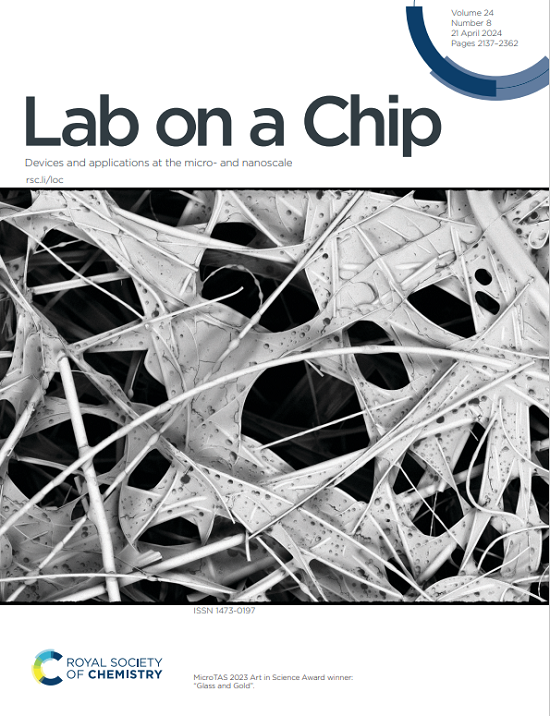Polyarginine-functionalized AP site probes for mechanistic analysis of uracil-DNA glycosylase via nanopore-based single-molecule sensing
IF 6.1
2区 工程技术
Q1 BIOCHEMICAL RESEARCH METHODS
引用次数: 0
Abstract
The interaction between abasic (apurinic/apyrimidinic, AP) sites and aberrant uracil DNA glycosylase (UDG) contributes to cancer progression, establishing AP site recognition and UDG detection as critical tools for bioanalytical applications and clinical diagnostics. However, existing methods face challenges in achieving high sensitivity and specificity. In this work, we developed DNA-R5, a novel DNA adduct formed by conjugating AP sites with polyarginine-5 (R5), which generates distinctive current signatures in nanopore sensing. While signal production remained sequence-independent, it exhibited dependence on arginine unit quantity, linker length, and electrolyte concentration. Characteristic signal patterns enabled clear identification of translocation events through the oscillating features. Quantitative analysis of high-frequency current signatures achieved UDG activity detection with sensitivity reaching 0.0005 U/mL, demonstrating DNA-R5's utility as a recognition biosensor. This molecular design strategy suggests potential applications for detecting diverse DNA lesions and biomolecular interactions.聚精氨酸功能化AP位点探针用于基于纳米孔的单分子传感的尿嘧啶- dna糖基酶机制分析
基础(无尿嘧啶/无嘧啶,AP)位点与异常尿嘧啶DNA糖基酶(UDG)之间的相互作用有助于癌症的进展,使AP位点识别和UDG检测成为生物分析应用和临床诊断的关键工具。然而,现有的方法在实现高灵敏度和特异性方面面临挑战。在这项工作中,我们开发了DNA-R5,一种新的DNA加合物,由AP位点与聚精氨酸-5 (R5)偶联而成,它在纳米孔传感中产生独特的电流信号。虽然信号产生与序列无关,但它与精氨酸单位数量、连接体长度和电解质浓度有关。特征信号模式可以通过振荡特征清楚地识别易位事件。定量分析高频电流特征实现了UDG活性检测,灵敏度达到0.0005 U/mL,证明了DNA-R5作为识别生物传感器的实用性。这种分子设计策略提示了检测不同DNA损伤和生物分子相互作用的潜在应用。
本文章由计算机程序翻译,如有差异,请以英文原文为准。
求助全文
约1分钟内获得全文
求助全文
来源期刊

Lab on a Chip
工程技术-化学综合
CiteScore
11.10
自引率
8.20%
发文量
434
审稿时长
2.6 months
期刊介绍:
Lab on a Chip is the premiere journal that publishes cutting-edge research in the field of miniaturization. By their very nature, microfluidic/nanofluidic/miniaturized systems are at the intersection of disciplines, spanning fundamental research to high-end application, which is reflected by the broad readership of the journal. Lab on a Chip publishes two types of papers on original research: full-length research papers and communications. Papers should demonstrate innovations, which can come from technical advancements or applications addressing pressing needs in globally important areas. The journal also publishes Comments, Reviews, and Perspectives.
 求助内容:
求助内容: 应助结果提醒方式:
应助结果提醒方式:


